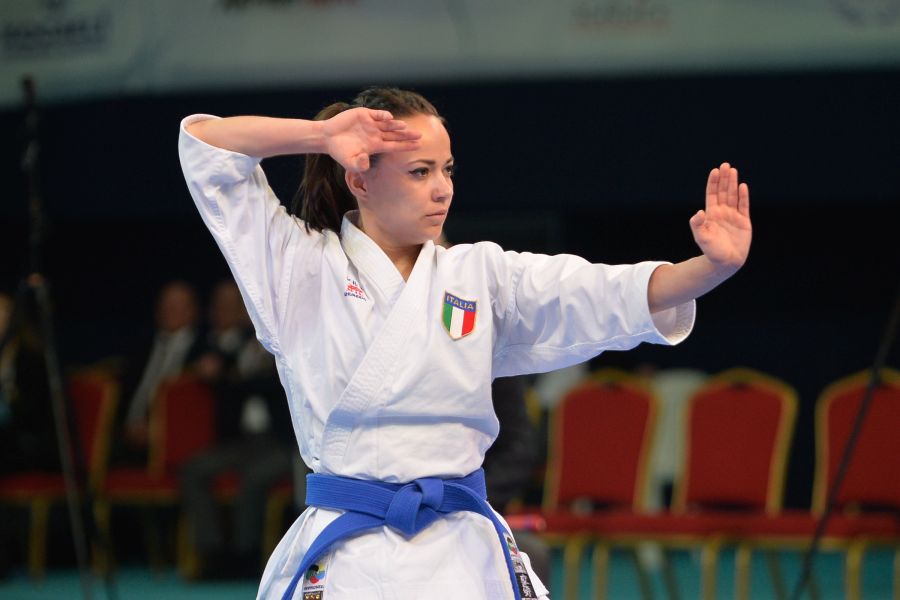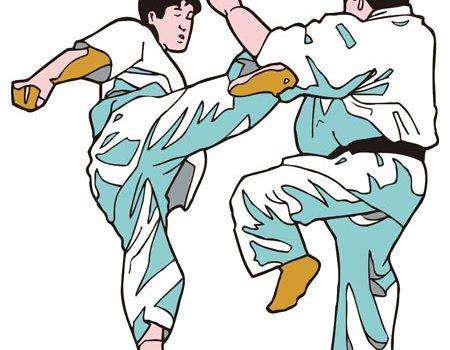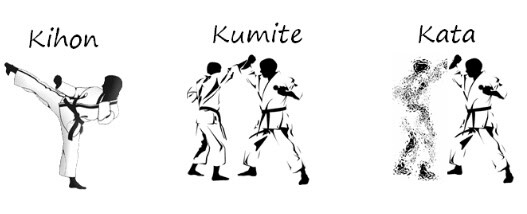In Karate, there are two forms that play a significant role in the practice and competition of this martial art: Kata and Kumite. These two forms embody different aspects of Karate and require distinct skills and techniques. Let’s take a closer look at each of them.
Kata: The Essence of Form
Kata is a Japanese term that means “form” or “pattern.” It involves a series of prearranged movements performed in a specific sequence. The purpose of Kata is to simulate a real combat situation against imaginary opponents. It allows Karate practitioners to practice techniques, stances, and transitions while focusing on precision and fluidity.
Each Kata has its own unique set of movements, techniques, and combinations. They require immense concentration, as practitioners need to visualize their opponents’ actions and respond accordingly. Through Kata, Karateka (Karate practitioners) develop muscle memory and enhance their body coordination, balance, and timing.
Traditional Karate styles often have their own set of Kata, passed down from generation to generation. Some famous Kata include Heian, Tekki, and Bassai. Each Kata has its own purpose, ranging from self-defense applications, physical conditioning, to spiritual and philosophical elements.
Kumite: The Art of Sparring
Kumite is the aspect of Karate that focuses on sparring. It involves controlled, simulated combat between two opponents. Unlike Kata, which is performed solo, Kumite allows practitioners to apply their techniques in a dynamic, real-time situation.
There are different formats of Kumite, ranging from non-contact to full-contact competitions. In non-contact Kumite, practitioners demonstrate their techniques without physical contact, focusing on speed, accuracy, and distancing. Full-contact Kumite, on the other hand, allows direct strikes and emphasizes both offensive and defensive techniques.
Kumite requires quick reflexes, anticipation, and adaptability. Practitioners must develop a keen sense of timing, footwork, and proper distancing to effectively land strikes while avoiding or blocking their opponent’s attacks. It enhances physical fitness, agility, and mental concentration.
Competitive Karate often includes Kumite as one of the scoring categories. Points are awarded based on successful strikes, kicks, and effective defensive maneuvers. The goal is not to harm the opponent but to demonstrate technical superiority, control, and strategy within the rules of the competition.
In conclusion, Kata and Kumite are two essential aspects of Karate. Kata allows practitioners to master precise techniques and develop mental focus, while Kumite enables them to apply those techniques in live combat situations. Both forms contribute to a holistic understanding and practice of Karate, providing practitioners with self-defense skills, physical conditioning, and personal growth.
If you are searching about Pin em Artes Marciais you’ve visit to the right place. We have 9 Images about Pin em Artes Marciais like What are Kata and Kumite the two forms in Karate? » FirstSportz, Karate. Differenze tra kata e kumite. – A.S.D. Athena Karate Club and also Karate Kihon Kumite Kata | Karate-Toffen. Here it is:
Pin Em Artes Marciais
www.pinterest.com
karate kata wkf marciales japonesas karatê spain pengertian domination sejarah shotokan diri peraturan teknik manfaatnya insidethegames karakter pembentukan manfaat marciais
Ayo Berlatih Karate :): Materi Latihan Pada Karate (Kumite)
karateisfun.blogspot.com
karate kumite latihan pada sparring deportistas svetu materi fighting destacan holaesungusto peru berlatih ayo wkf nordhorn ansiktet
Allenamento Agonistico Kata E Kumite – ASC Lombardia
www.asc-lombardia.it
Kata And Kumite Practice 2016 – April 9. 2016 | FSKA
fska.com
kumite karate practice kata funakoshi shotokan association
Karate. Differenze Tra Kata E Kumite. – A.S.D. Athena Karate Club
athenakarateclub.altervista.org
karate kata kumite differenze
Karate Kihon Kumite Kata | Karate-Toffen
karate-toffen.ch
Regras Do Karatê: Como Funcionam As Modalidades Kumite E Kata
www.esportelandia.com.br
Karate. Differenze Tra Kata E Kumite. – A.S.D. Athena Karate Club
athenakarateclub.altervista.org
karate kata differenze kumite
What Are Kata And Kumite The Two Forms In Karate? » FirstSportz
firstsportz.com
kumite kata karate firstsportz
Ayo berlatih karate :): materi latihan pada karate (kumite). Karate. differenze tra kata e kumite.. Karate. differenze tra kata e kumite.













